Cranberry Sauce
A punchy alternative to the canned stuff
By Evan Meade, 2024-11-27 05:00:46
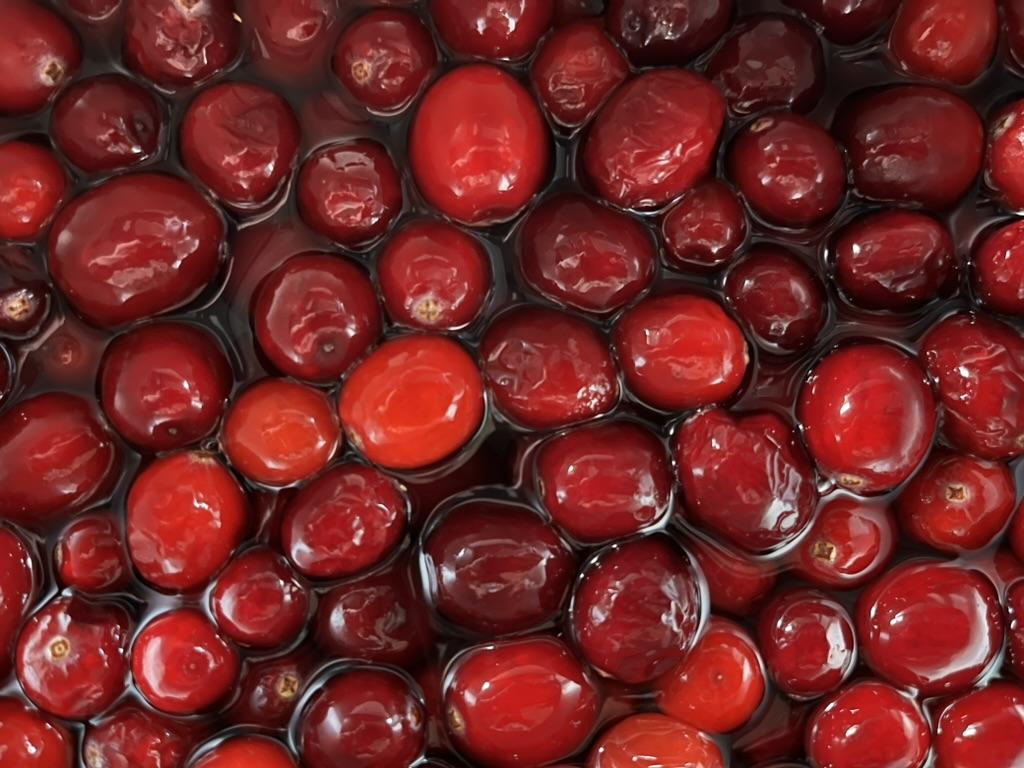
Cranberry sauce does not belong in a can.
My family's Thanksgiving spread has always featured homemade cranberry sauce of one sort or another, a fact for which I am eternally grateful. For many years, I was not aware that canned cranberry sauce even existed, much less that it was an American staple. The default can of Oceanspray Cranberry Sauce is--in my not so humble opinion--a distressingly cylindrical abomination which has had any pretense of flavor drowned out by a surplus of gelatinized water.
Is this a hyperbolic description? Obviously. But while the magnitude of this statement is clearly farcical, I believe its direction genuinely. The Jello-like stuff you get from the store misses the mark on a number of opportunities which would otherwise make cranberry sauce shine on the Thanksgiving plate. It's fine...but it's just that: fine. When it can be so much more, with so little effort.
Cranberry Sauce: A Theory
If there is one thing you take away from this diatribe I hope it is this:
It's called "cranberry sauce" for a reason. It does not exist in a vacuum; it is a condiment intended to complement other Thanksgiving dishes by brightening the palette.
Thanksgiving feasts are notoriously heavy meals. Between turkey, gravy, mashed potatoes, and rolls, there are a lot of rich, fatty starches in attendance. Fats have this unique ability to coat one's tongue, allowing flavors to linger there longer than they would otherwise. In some culinary applications--such as a chili flake oil or fresh carnitas--this is a great way to elevate and extend the flavor of a dish.
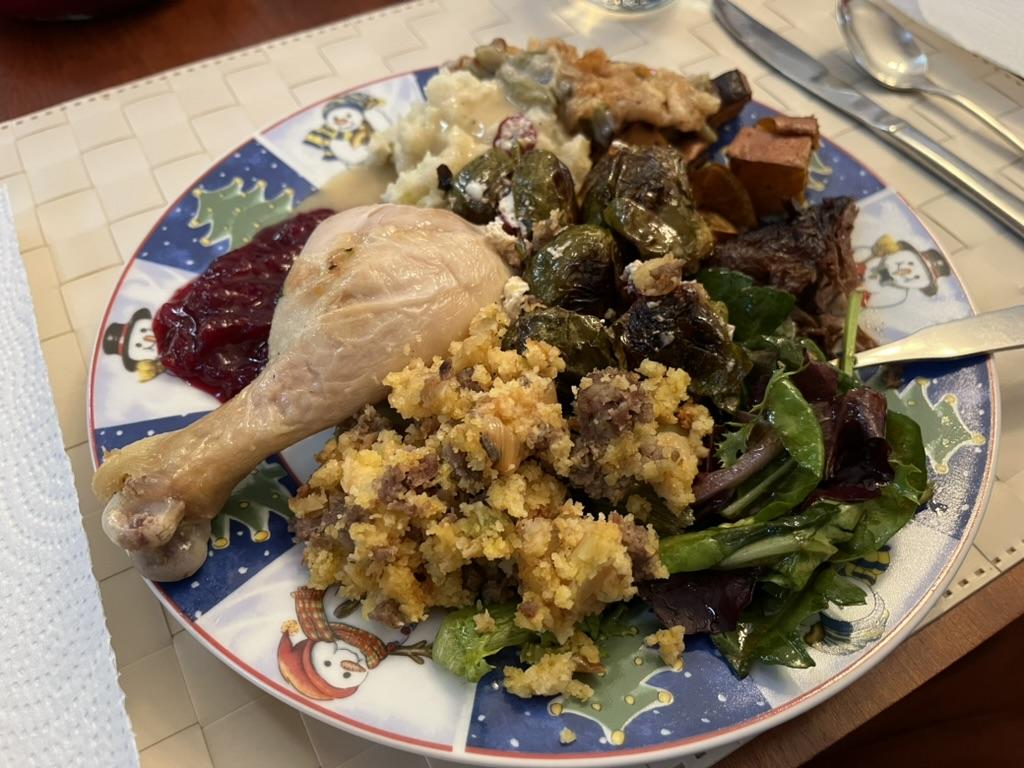
However, when it comes to Thanksgiving, there is no "single dish." There is, in fact, a very wide array of dishes, most of which have relatively subtle flavors. Optimally, each guest is sampling most, if not all, of the dishes available. This may be anywhere from 4-12 items depending on the particular feast. My experience has always been that most of these dishes possess very similar flavor profiles, and as a result, they all start to taste a bit similar after just a couple minutes.
The most easily differentiated dish which exists on even the most basic Thanksgiving menu is cranberry sauce. Cranberries are a naturally tart fruit with jammy undertones. Used well, they can add not only a pop of sweetness (which the canned stuff can do as well), but also a distinct texture and a sharp, acidic bite.
Such a sauce can be used in a couple different ways. Obviously, one can simply alternate small bites of cranberry sauce between other foods. However, a well-made cranberry sauce can also be composed directly onto other foods. A small dollop can be pushed on top of turkey, mashed potatoes, or stuffing before being consumed as one combined, more interesting bite.
Sauce Development Criteria
I forget exactly where I first heard this concept, but it has stuck with me ever since and has helped me improve my sauce skills dramatically:
A good sauce, on it's own, should be a little overpowering. It is meant to be consumed atop a (generally) blander substrate, so you have to imagine "averaging" out the bold flavor over the entire sauced assembly.
That is, the sauce itself may be a little too salty, a bit too acidic, maybe even oversweet. But when something is dipped in the sauce, the bite as a whole will feel balanced.
That being said, I do still enjoy eating some cranberry sauce on its own. So while I err on the side of powerful flavors here, I don't want to make something which is wholly unpleasent on its own.
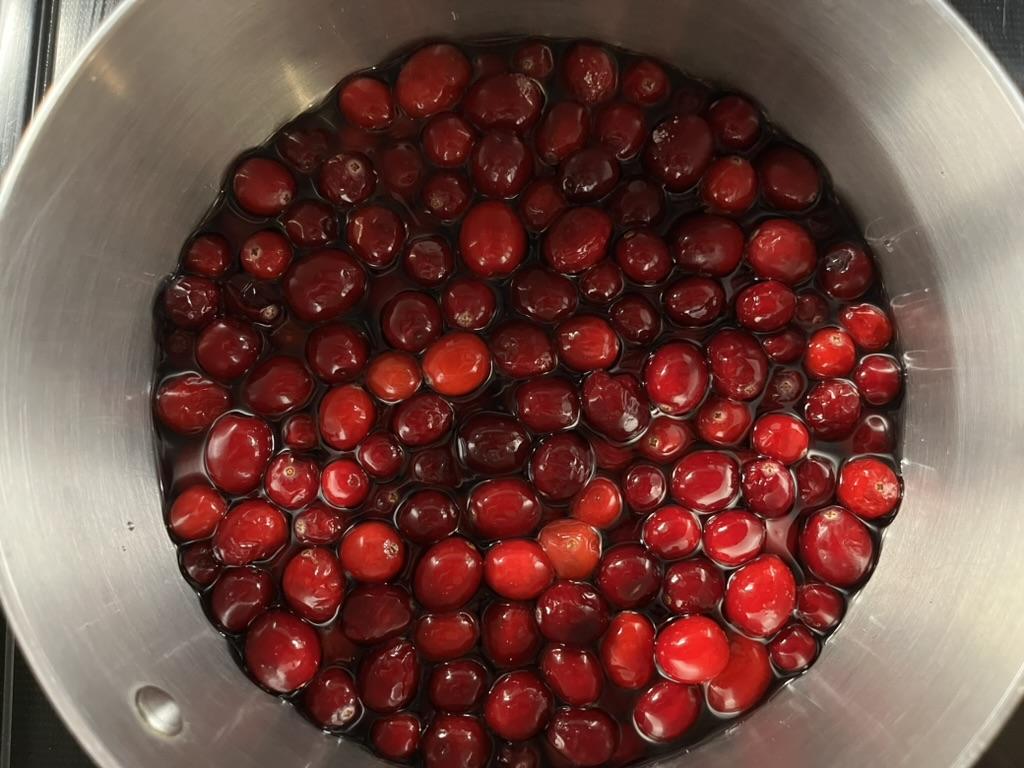
I don't have a formal equation for scoring a cranberry sauce, but I do have a set of key principles from which one could probably derive their own formula. The following are my criteria for a good cranberry sauce, in relative order of importance from highest to lowest:
- Acidity - Specifically, tart acidity, like a lime or a granny smith apple. Something that makes you salivate to try and clear any lingering fats from the tongue.
- Fruitiness - I'm looking for the type of fruit flavor which doesn't feel overly cooked down. There's already a lot of cooked produce on the plate (e.g. green beans, sweet potatoes), so this should have some brighter, more raw-tasting flavors to it.
- Texture - Heterogeneity is a great way to keep a dish interesting to the palette for longer. Having some popped cranberry skins and bits of zest help make each bite a bit different from all the others before or after.
- Sweetness - While the acidity should be the star of the show, we're not trying to make table vinegar here. Some sweetness can help to balance out the acidity and allow the fruitty, jammy flavors to shine through brighter than they would without it.
- Color - As a matter of personal taste, I think the most appealing cranberry sauce color is somewhere between ruby and candy apple red. It should be dull enough to not scream "artificial," but not so dull that it is just another muted color on an already muted plate.
- Bitterness - Just a whiff of it at the end. Bitterness is a divisive flavor, and it has a tendency to linger (exactly the thing for which we are trying to correct). So just a hint for contrast is nice, but it shouldn't overstay its welcome.
Acid-Adjusted Orange Juice: A Breakthrough
So to hit the mark on acidity, we need some citrus in the mix. Easy enough, right?
But there's a problem. Many existing cranberry sauce recipes call for the zest and juice of an orange to be added. On its face, this makes a lot of sense. Oranges do have acid (they are citrus fruits, after all) and their flavors pair very well those of with cranberries. However, normal orange juice is actually a bit of a flawed ingredient in many recipes.
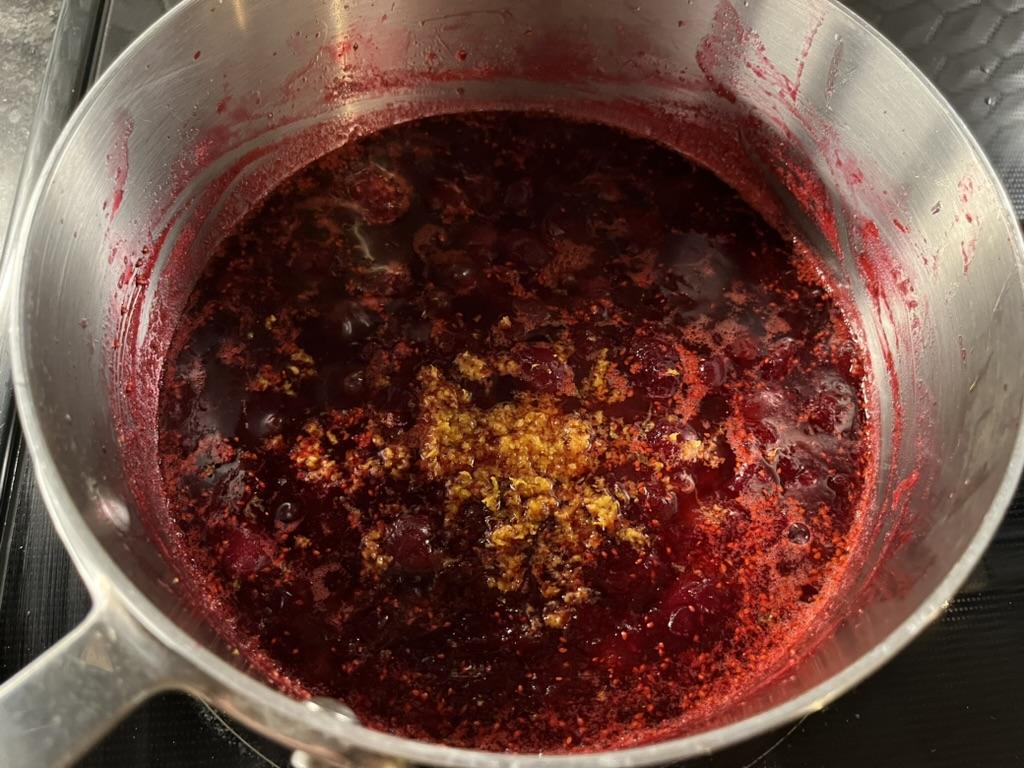
In short, orange juice is just too dilute and not acidic enough to pack an appropriate punch in just about anything besides, well, orange juice. In his highly influential cocktail treatise Liquid Intelligence, Dave Arnold describes how to modify orange juice in order to bring it up to the acidity level of a lime (about 6% by mass). While his methods for doing so are a bit beyond the scope of the average Thanksgiving preparation, I think the intuition is correct: keep the orange flavors but pair them with lime acidity.
So, if one simply combines orange zest with lime juice and allows them to meld a bit, say under the heat of a stovetop, hypothetically one can get the well-matched flavor of an orange along with the snappy bite of lime juice. This makes for a much more balanced cranberry sauce than an orange's zest and juice on their own.
Conclusions
When there are already so many subdued flavors and colors on a Thanksgiving plate, there's no reason for cranberry sauce to be one of them. A fresh cranberry sauce is very easy to make, can be stored ahead of time, and adds a ton of much needed contrast. By substituting orange juice for lime juice (while keeping the orange zest) one can produce a more balanced and potent sauce ready to be a team player with all your other dishes.
Cranberry Sauce
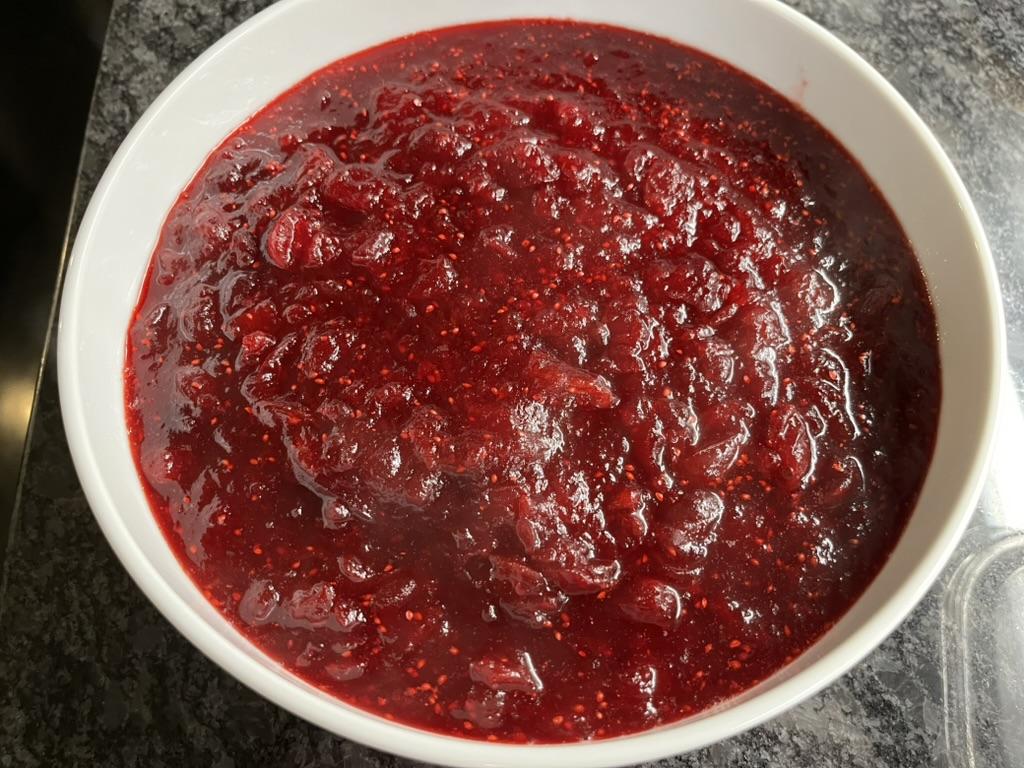
Yields approximately 2 cups
Ingredients
- 1 bag fresh cranberries (12 oz)
- 3/4 c white sugar
- 1 c water
- 1 orange (zest of)
- 1/4 c lime juice
Directions
- Add cranberries, sugar, and water to a saucepan.
- Simmer over medium heat stirring occasionally and lightly mashing until cranberries begin to pop, about 10-15 minutes.
- Zest orange into saucepan and add the lime juice. Stir to incorporate.
- Reduce heat to low and continue simmering for another 10-15 minutes until the sauce begins to gel on a chilled plate (or lightly coats the back of a spoon).
- Remove sauce from heat and let cool completely, preferably overnight in the fridge.
- Serve slightly cool.
Notes
I prefer a more sour, punchy cranberry sauce than most recipes aim for. So if you don't like that, you can leave out the lime juice and/or increase the sugar to 1 cup. But I encourage you to at least try it this way once.
On the other hand, if the tartness isn't quite where you want it but you don't want to make the sauce any looser, you can add pure powdered acid. A 2:1 ratio of citric acid to malic acid will roughly replicate the acidity of lime juice.
Cooking
recipe cranberry sauce acidity